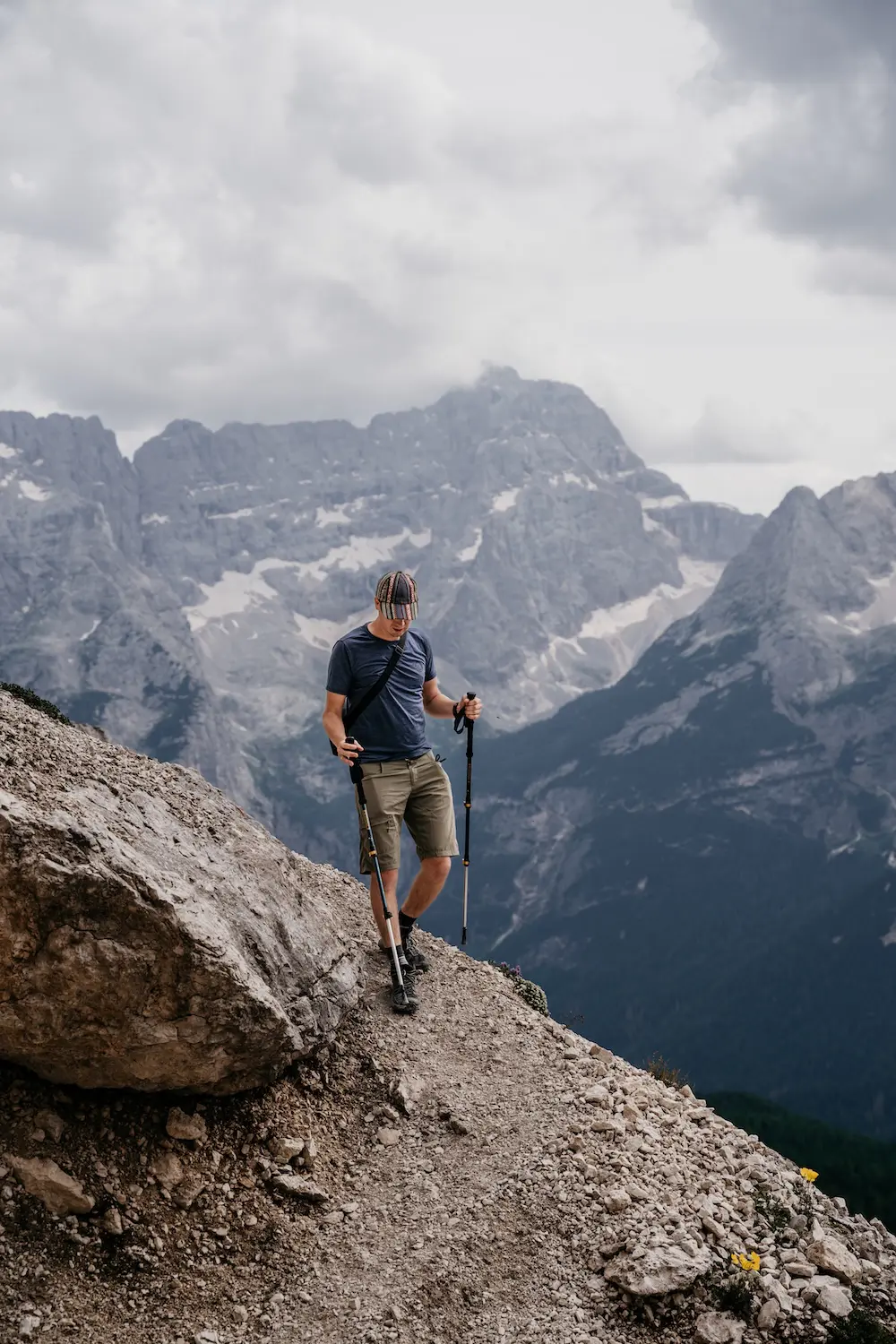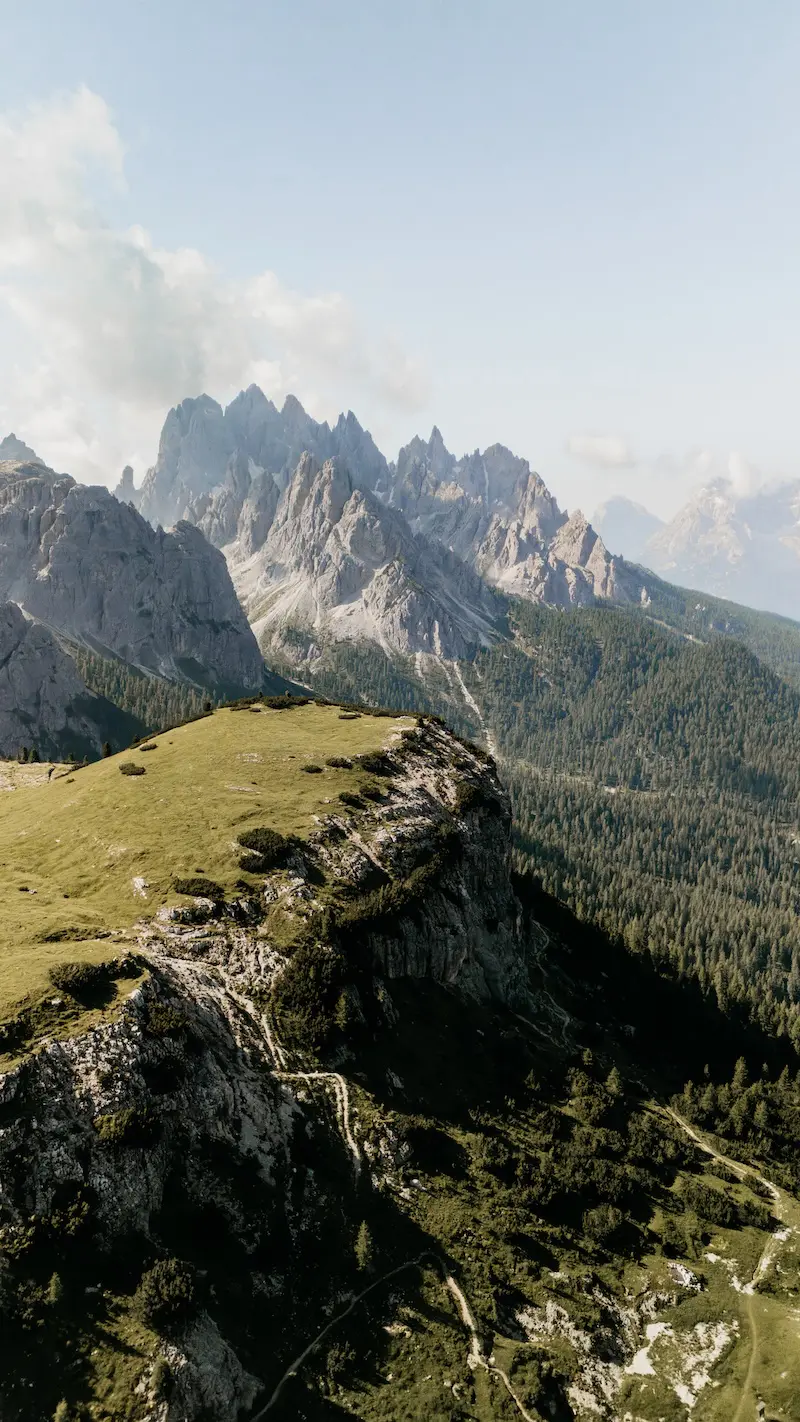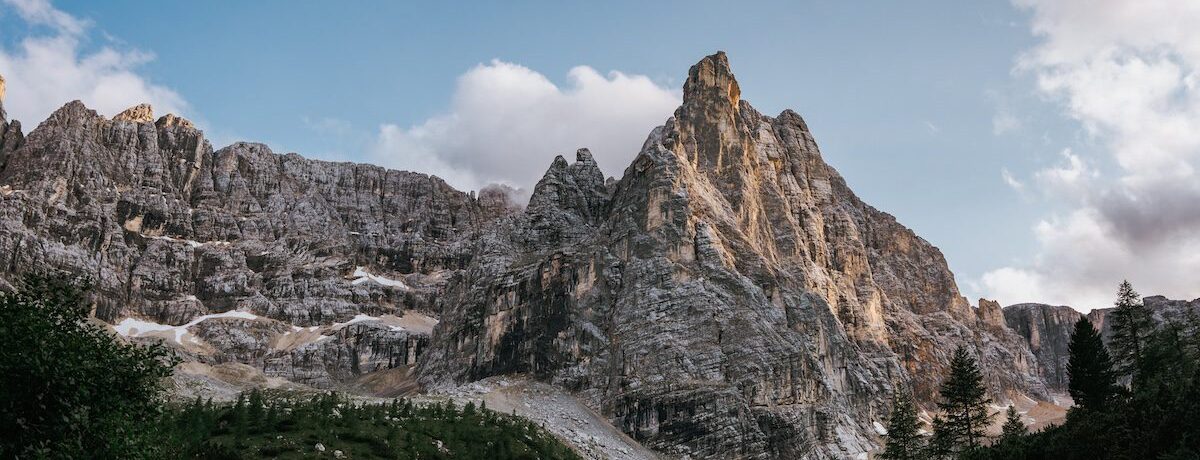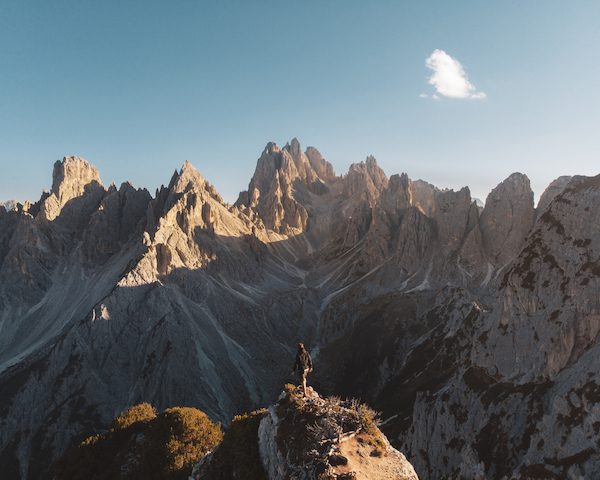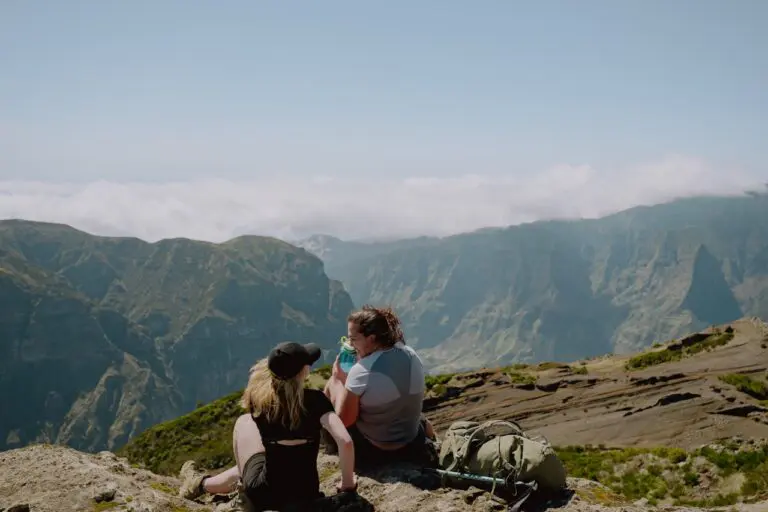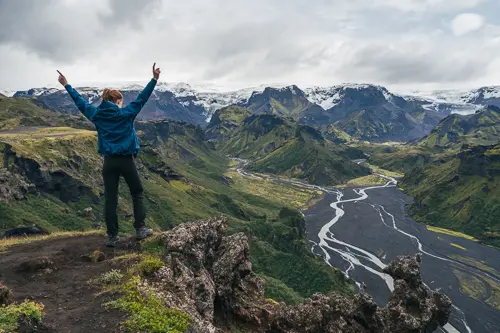The Drei Zinnen are undoubtedly the most famous natural wonder of the Dolomites – and for good reason. The three distinctive rock peaks rise like petrified giants from the landscape and offer an incomparable panorama. A hike around the Drei Zinnen is one of the most impressive experiences in the Alps. While many visitors come just for a photo stop, the complete loop is worth it as it reveals totally different perspectives of the imposing peaks.
On the Dolomiti Trail, you can experience the Drei Zinnen up close while discovering other spectacular landscapes, such as Lago di Sorapis or Lago di Braies.
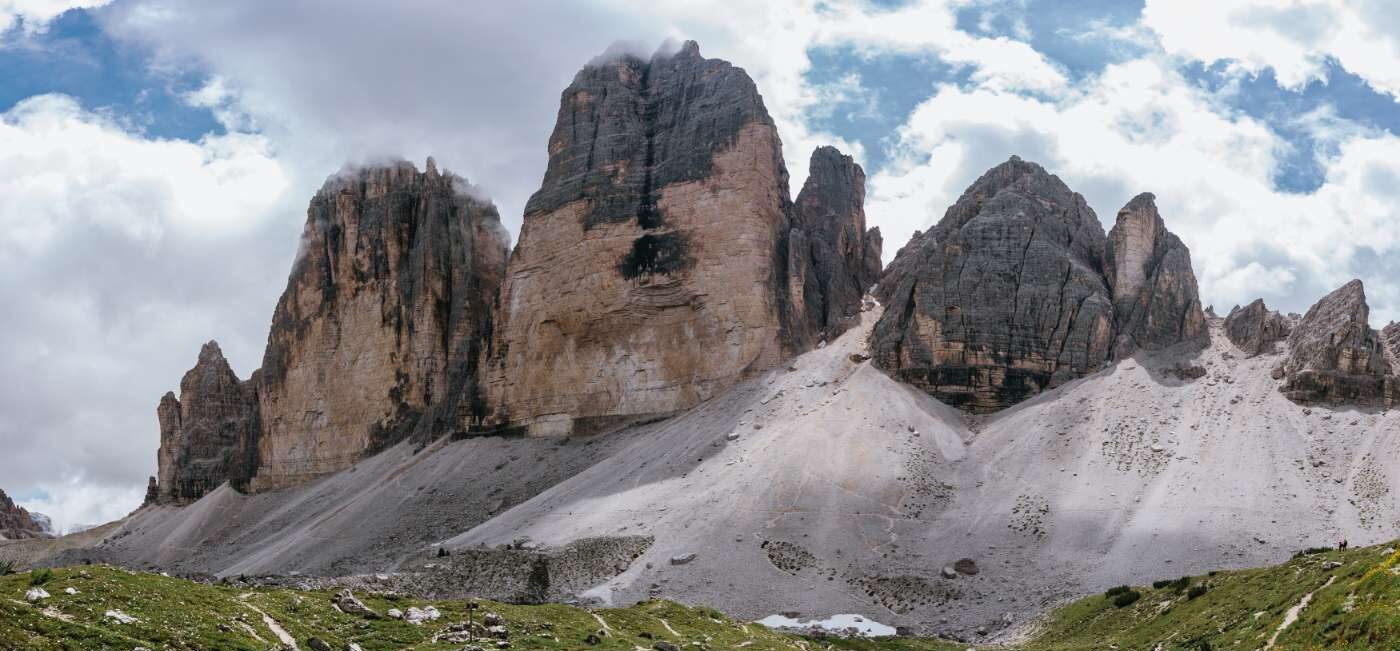
- The Dolomites are a UNESCO World Heritage Site and home to some of the most impressive rock formations in the world.
- Among the most famous rock formations are the Drei Zinnen, Cinque Torri, Langkofel, Rosengarten, Vajolet Towers, Monte Pelmo, and the Schlern.
- Hiking is the best way to explore the Dolomites – whether you're looking for the well-known highlights or hidden gems.
- The Dolomiti Trail takes you to the most beautiful spots in the region and offers unforgettable hiking experiences.
The Dolomites are a true paradise for nature lovers and hiking enthusiasts. This unique mountain range in Northern Italy impresses with its majestic rock formations, rugged peaks, and idyllic valleys. It's no wonder that the Dolomites are part of the UNESCO World Heritage and attract countless visitors each year.
As a passionate hiker, there's no better way for you to explore the beauty of the Dolomites than on foot. Whether you want to experience famous sights like the Drei Zinnen or Langkofel, or prefer to venture off the beaten path in search of hidden treasures – the Dolomites have something for everyone.
The most famous rock formations of the Dolomites
Three Peaks (2,999 m)
The Drei Zinnen consist of the peaks Cima Grande (2,999 m), Cima Ovest (2,973 m), and Cima Piccola (2,857 m). They are not only a symbol of the Dolomites but also a popular destination for hikers and climbers. The view from the north side is particularly impressive, where the steep walls drop almost vertically downwards.
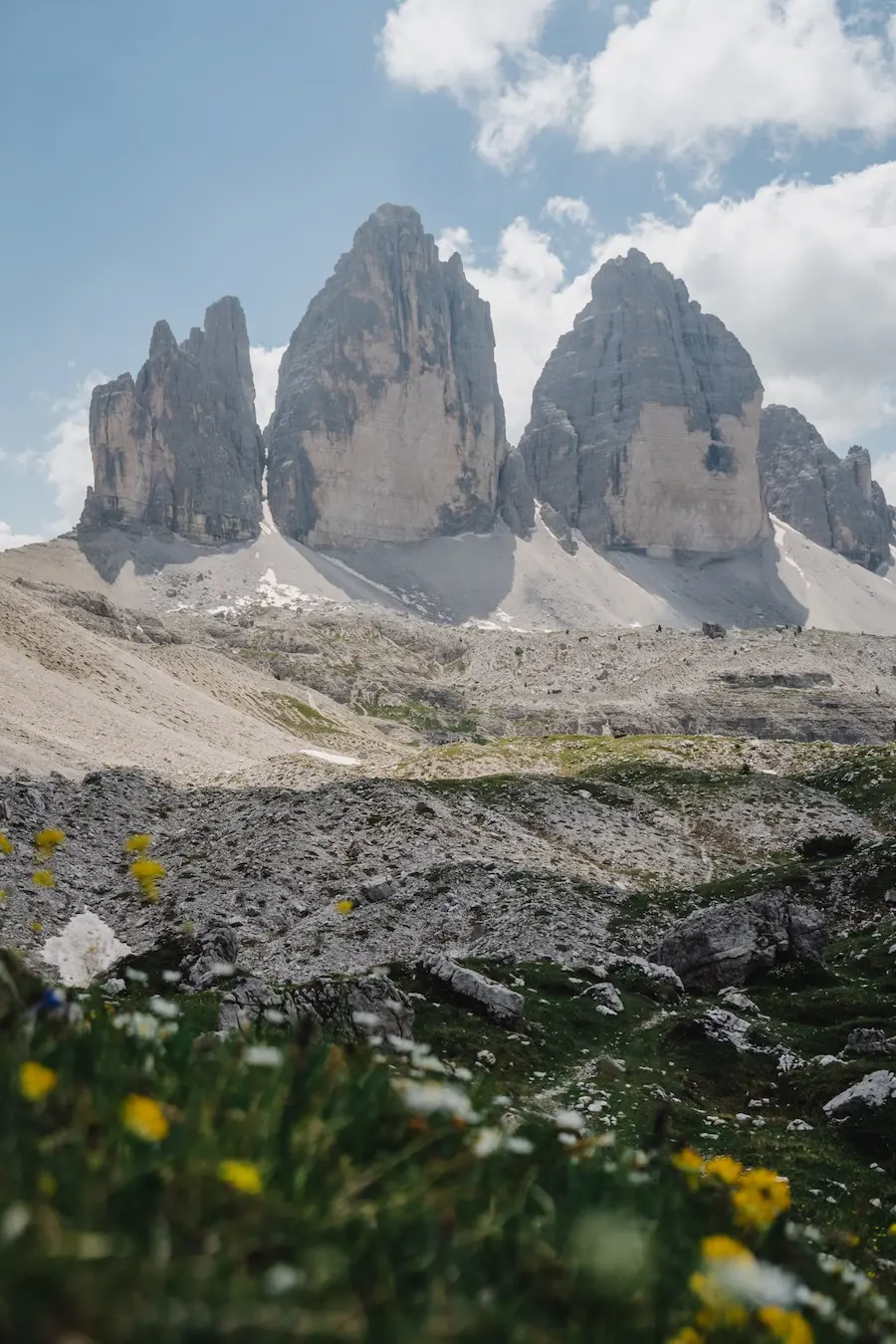
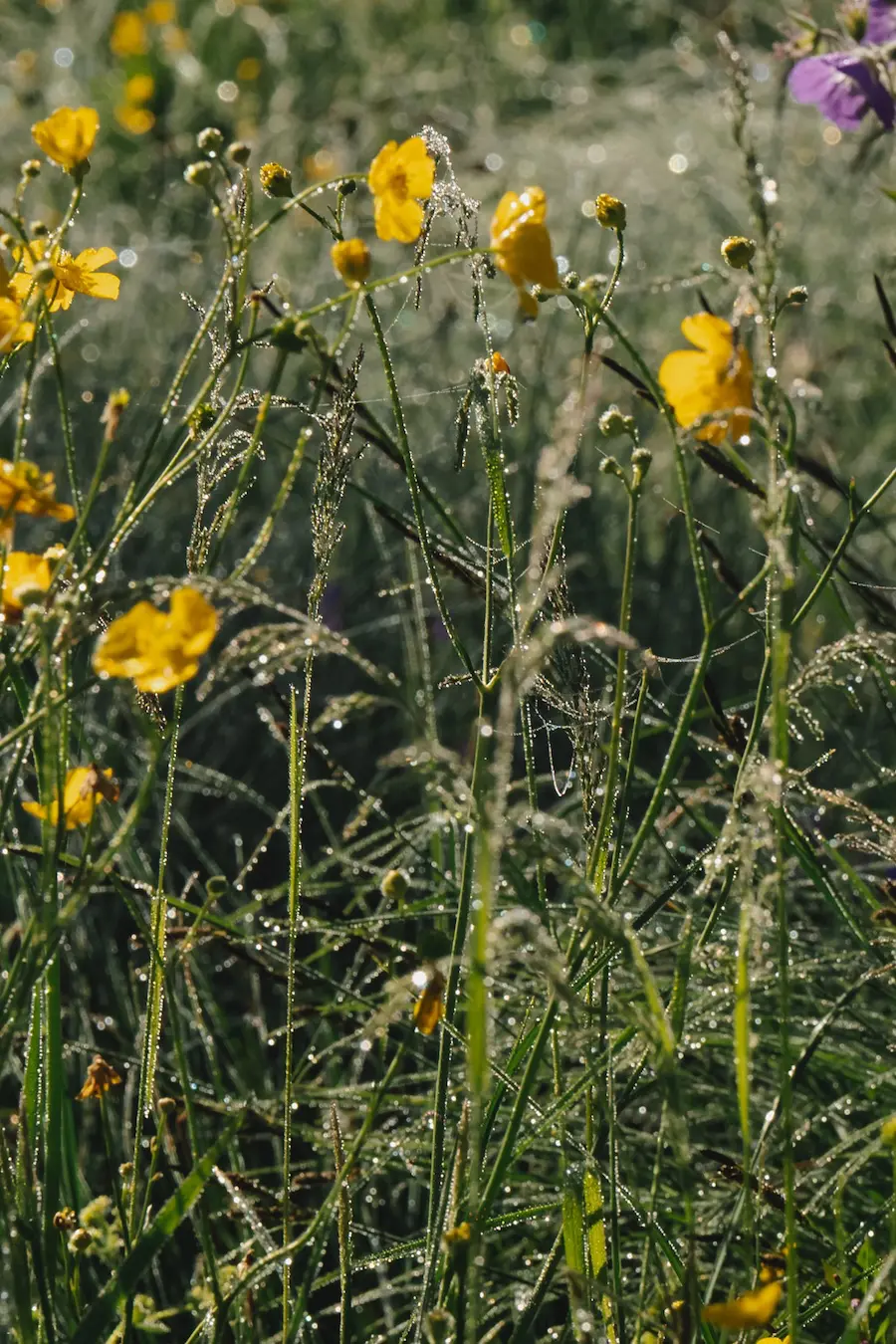
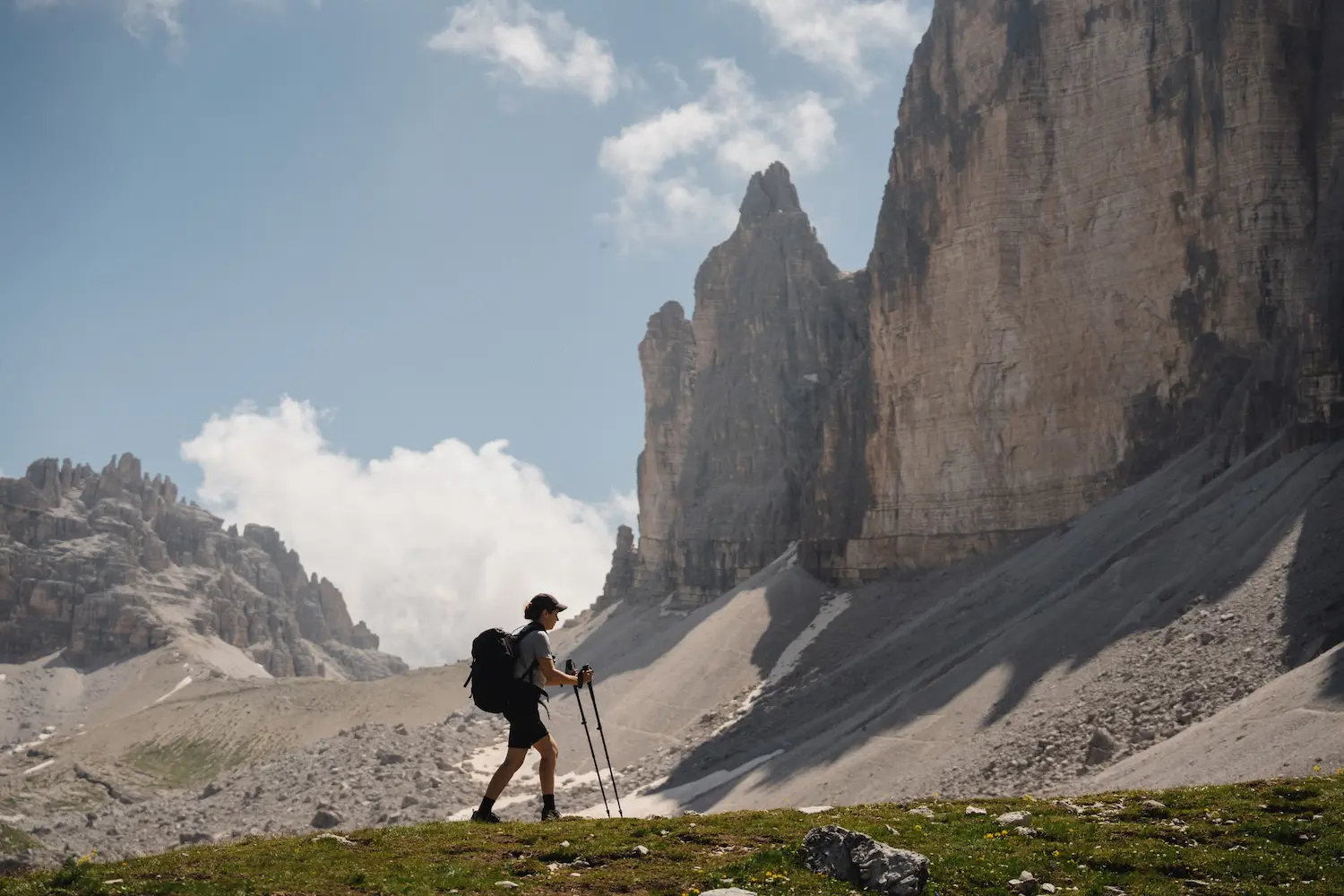
Langkofel (3,181 m) & Plattkofel (2,958 m)
These two impressive peaks make up the Langkofel massif and are particularly popular among mountain climbers. The Langkofel resembles a gigantic monolith, while the Plattkofel offers gentler, yet equally stunning slopes. Hikes around this massif provide breathtaking views of the Grödner Valley.
Monte Pelmo (3,168 m) – “Throne of the Gods”
Monte Pelmo rises like a fortress into the sky with its massive, steeply sloping rock walls. Due to its powerful appearance, it is often referred to as the "Throne of the Gods." The view from the surrounding valleys is particularly impressive.
Cinque Torri (2,361 m)
The Cinque Torri (“Five Towers”) are a striking rock formation near Cortina d’Ampezzo. These bizarre towers are not only a hotspot for climbers but also for history enthusiasts, as trenches from World War I have been preserved here. Those looking to experience the Dolomites in depth can choose an impressive route along the Dolomiti Trail that takes you past the Cinque Torri and offers spectacular views.
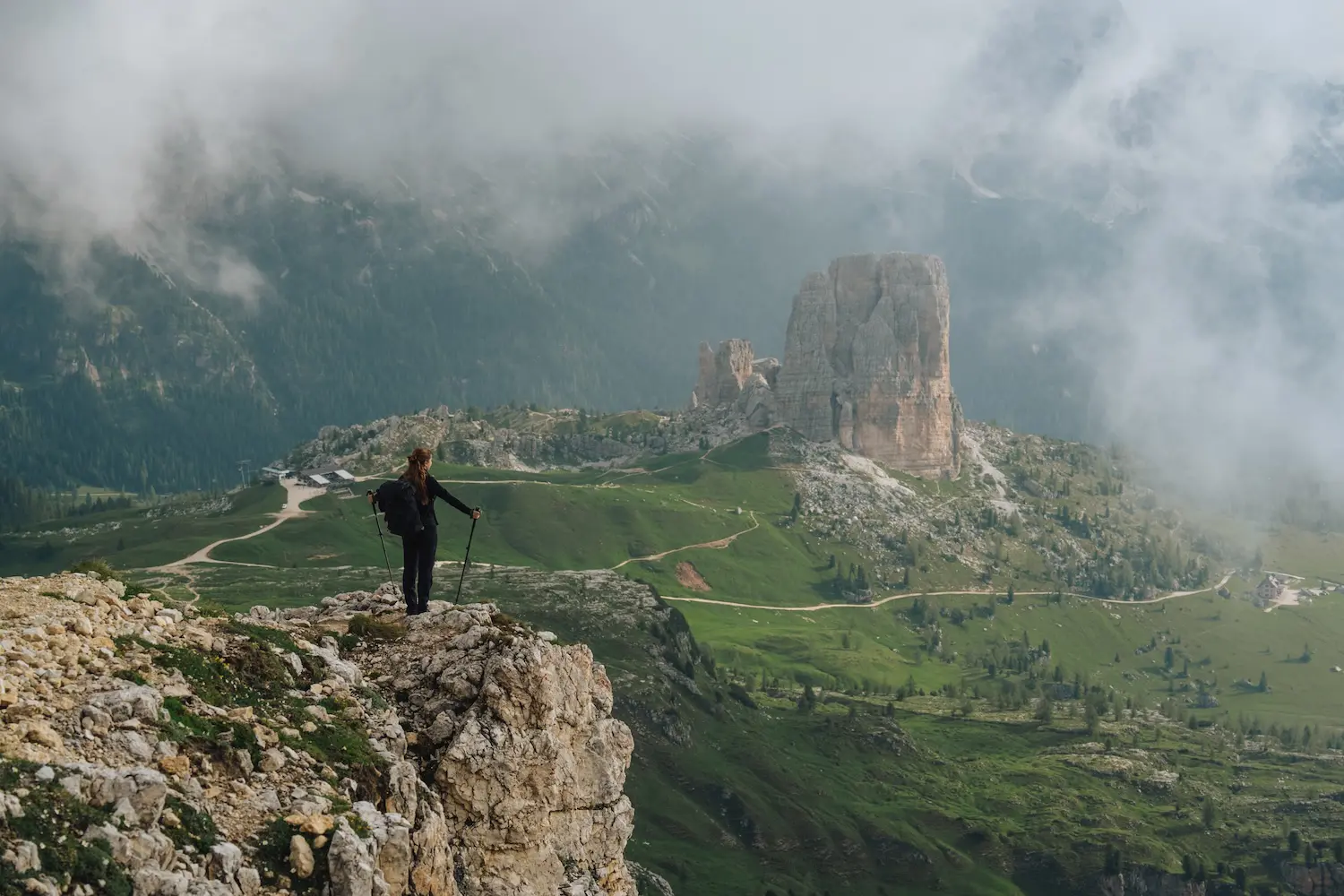
Rosengarten (2,981 m) & Vajolet Towers
The Rosengarten is mainly known for its unique “alpenglow” – at sunset, the rocks turn a vivid red. This massif also houses the Vajolet Towers, a group of six narrow, spectacular rock spires that are particularly popular among climbers.
Schlern (2,563 m) – Symbol of South Tyrol
The Schlern is one of the most famous mountains in South Tyrol. Its distinctive shape, with steep rock faces and expansive alpine meadows, makes it a popular hiking destination. A climb offers a fantastic panoramic view over the entire Dolomites region.
The Dolomites are one of the most spectacular mountain ranges in Europe and offer countless fascinating rock formations. Whether you admire the famous Drei Zinnen, explore the wild Cinque Torri, or experience the magical atmosphere of the Rosengarten – you'll find nature experiences that are truly exceptional. And if you want to experience the most beautiful spots in the Dolomites on a unique hiking route, the Dolomiti Trail is a must!
Pack your hiking boots and discover one of the most beautiful mountain ranges in the world!
